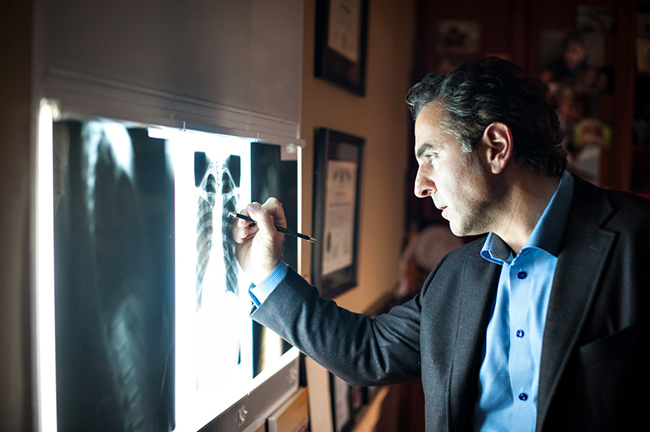 Diagnostic imaging is one of those terms that can cause anxiety in a lot of people. They figure that a doctor would only order such a test if there was a serious problem. However, it’s important to keep in mind that diagnostic imaging will just rule out certain conditions just as often as it detects a problem.
Diagnostic imaging is one of those terms that can cause anxiety in a lot of people. They figure that a doctor would only order such a test if there was a serious problem. However, it’s important to keep in mind that diagnostic imaging will just rule out certain conditions just as often as it detects a problem.
Let’s start by clarifying what diagnostic imaging is and does. Diagnostic imaging is a test that allows a doctor to look inside your body. Much can be learned through medical history, visual exams and blood testing, but doctors often need to look deeper to find out what’s going on.
Diagnostic imaging is a tool that allows us to do just that. As the name suggests, diagnostic imaging helps us diagnose and gather information about a person’s condition and determine the most effective treatment.
Here are some of the most common types of diagnostic imaging:
X-Ray
X-rays are electromagnetic waves that pass through your body to create black and white pictures of your insides. The shades of black and white vary because different types of body tissue absorb different amounts of radiation. That’s why bones appear white, soft tissue appears gray, and air in the lungs appears black.
Most people associate x-rays with broken bones and dental cavities. However, x-rays can show everything from pneumonia and lung cancer to an enlarged heart and breast cancer. A dye can be injected before an x-ray to enable a doctor to spot blocked blood vessels, digestive problems and other disorders.
CT Scan
Computed tomography (CT) uses a group of x-rays from various angles to create cross-sectional images of the body. This provides more detail for the doctor. CT scans are often recommended to examine an injury caused by an accident or some other form of trauma.
CT scans are used to diagnose muscle and bone disorders, detect conditions such as cancer, heart disease, liver masses, and internal injuries, and pinpoint the location of an infection, tumor or blood clot. Progress of treatment for cancer and other diseases can be monitored through CT scans. As in x-rays, dye is sometimes used to highlight certain conditions.
MRI
Magnetic resonance imaging (MRI) uses a combination of magnetic and radio waves to closely examine organs, tissues and various structures in the body, from your bones to your brain. An MRI machine is essentially a tube-shaped magnet. As you lie inside the tube, the body’s hydrogen atoms are aligned by a magnetic field, producing faint signals that are used to create high-resolution images. These images can be cross-sectional or 3D.
We often hear about athletes having an MRI on their knee, spine or neck after an injury. MRI is the most commonly used imaging test for the brain and spinal cord. MRI can be used to diagnose aneurysms, eye and ear disorders, multiple sclerosis, stroke, tumors and other conditions. In the heart, MRI is used to identify irregular function, structural issues, inflammation, blocked blood vessels, and damage caused by a heart attack. Of course, MRI can be used to check the condition of virtually any organ, tissue, bone or joint in the body.
In the next post, I’ll discuss other types of diagnostic imaging, including bone scans, diagnostic ultrasound, and PET scans.